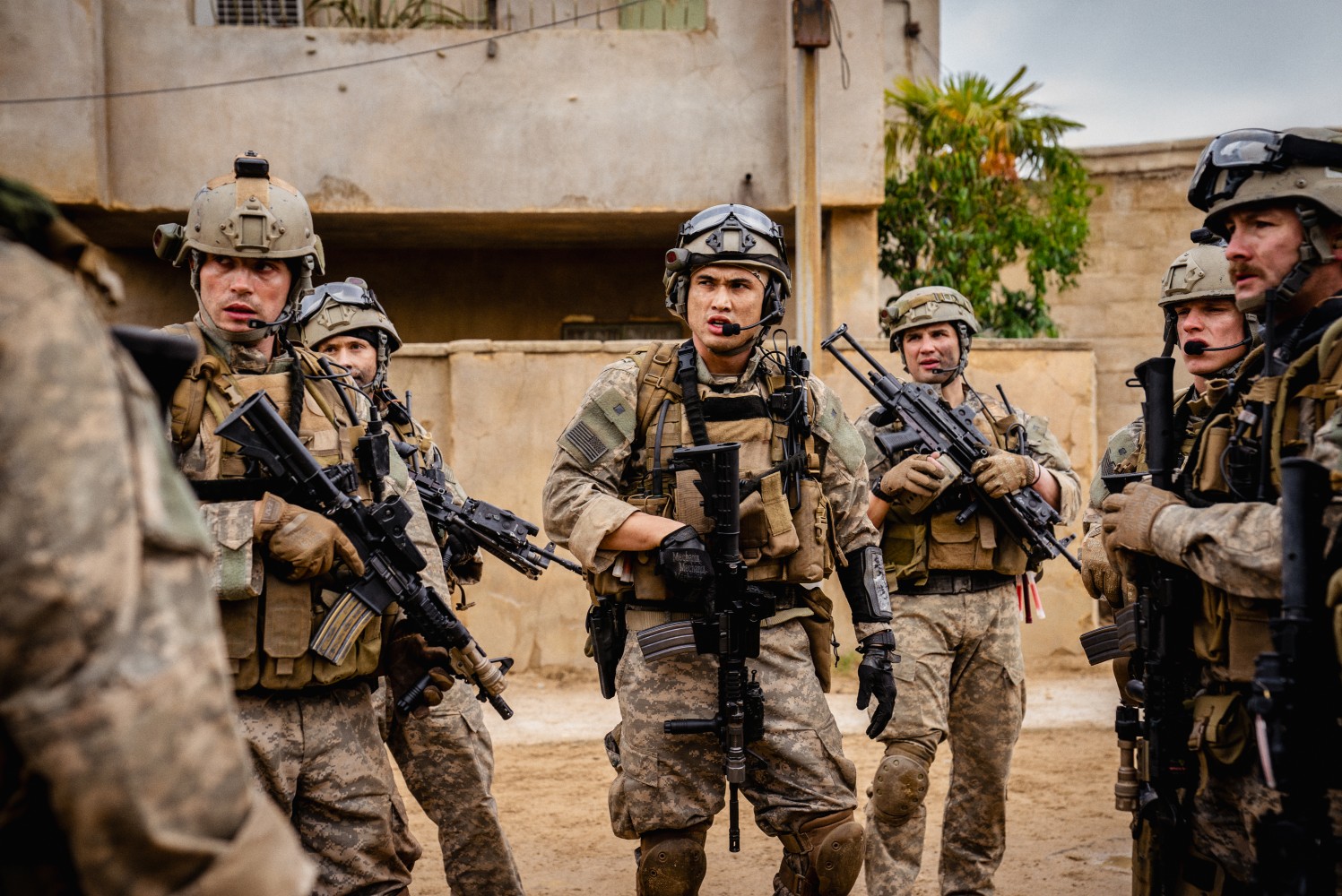Warfare is the ugly truth about war. It is gut-wrenching, brilliant filmmaking about the brutal and sad lot of a soldier’s life that takes a blowtorch to the audience’s nervous systems. Fed into the meat grinder for reasons that they don’t even know or understand. Panic-inducing and raw. Electrifying.
The synopsis for the film states and this quote is also placed on an opening title card, that the film is set in real-time and based on the memory of the people who lived it. With the exception of an opening scene that shows the soldiers in a different setting, that is exactly what the film is. It drops you into a mission with a squad of Navy SEALS. You get to live and breathe with them as the mission takes a horrific turn, and the anxiety that I mention comes from how much the audience is drawn into the conflict and placed into the rooms and streets with the soldiers.
Is there a standard plot that one would find in other such films? No, and this was a wise decision by the filmmakers, Iraq War veteran Ray Mendoza and Alex Garland (Civil War, 28 Days Later). There’s not a traditional narrative structure with elaborate backstories or romantic subplots. It just dumps you into the situation and uses filmmaking techniques to cause a fusion between the viewer and the soldiers onscreen.
The soldiers are played by an ensemble cast including D’Pharaoh Woon-A-Tai as Mendoza alongside Will Poulter, Cosmo Jarvis, Joseph Quinn, Kit Connor, Finn Bennett, Taylor John Smith, Michael Gandolfini, Adain Bradley, Noah Centineo, Evan Holtzman, Henry Zaga, and Charles Melton.
As a unit and as individuals, they work together to show rather than tell who the characters are. Alternately full of bravado, stoic, vulnerable, and terrified, these are not the chest-pounding heroes of most war films. They are people who frequently don’t know what to do and cling to routine, and you watch their eyes ping pong back and forth in their sockets, desperately searching for an escape route. You can see and thus feel the fight or flight response in their faces. They make mistakes, have limitations, and engage in male bonding, where brotherhood is expressed by doing something mean to your friend that makes you laugh.
The cinematography is by David J. Thompson and flows seamlessly from one angle to the next and is instrumental in the audience’s connection to the characters. Thompson’s warts and all extreme close-up shots of the soldier’s faces as they monitor people in the neighborhood. These shots are so close that you can clearly see the pores on their skin and blemishes and sweat pops from their brows. His work communicates the tension within and without the squad.
Glenn Freemantle, mpse, is a longtime collaborator with Garland and has been working in sound design for 20 years. Much like his work in Civil War, the thunderous sound design is unnerving and constant as both sides fire their assault rifles, explosions vibrate in your chest, and aircraft fly low over the street as a “show of force.” It’s all part of the immersion that the film does so well.
Many people who saw that Garland was making a war film with a soldier as his co-writer and co-director assumed that the resulting film would be a jingoistic flag-waving hunk of pro-war propaganda. They were wrong.
Watching Warfare gave me some of the strongest anti-war feelings that I have ever felt. It gives the soldiers their humanity in all its tragi-comic glory and shows them as everyday people in a nightmare of bullets and blood. All they want is to get back to base without getting a bullet in the brain. I think the film intentionally overwhelms and doesn’t single out each soldier as would normally be done. Body parts are strewn in the street, and shredded bodies are in full view of the audience with pools of blood.
The gore in the film is casual and matter-of-fact because that is the reality of war. The soldiers are hard to pin down as characters, and the film’s presence is overwhelming for the same reason. They are cogs in a gruesome machine of death that makes them faceless and nameless.
Warfare accurately represents exactly who they are to the men in power. As the credits rolled, I remember thinking that the warhawks and military commanders in our government should be made to watch this film. Perhaps it might give them pause before choosing to deal death out to other human beings who look to them for guidance and safety but are ultimately made to pay the real cost with their blood, their flesh, and their souls.











